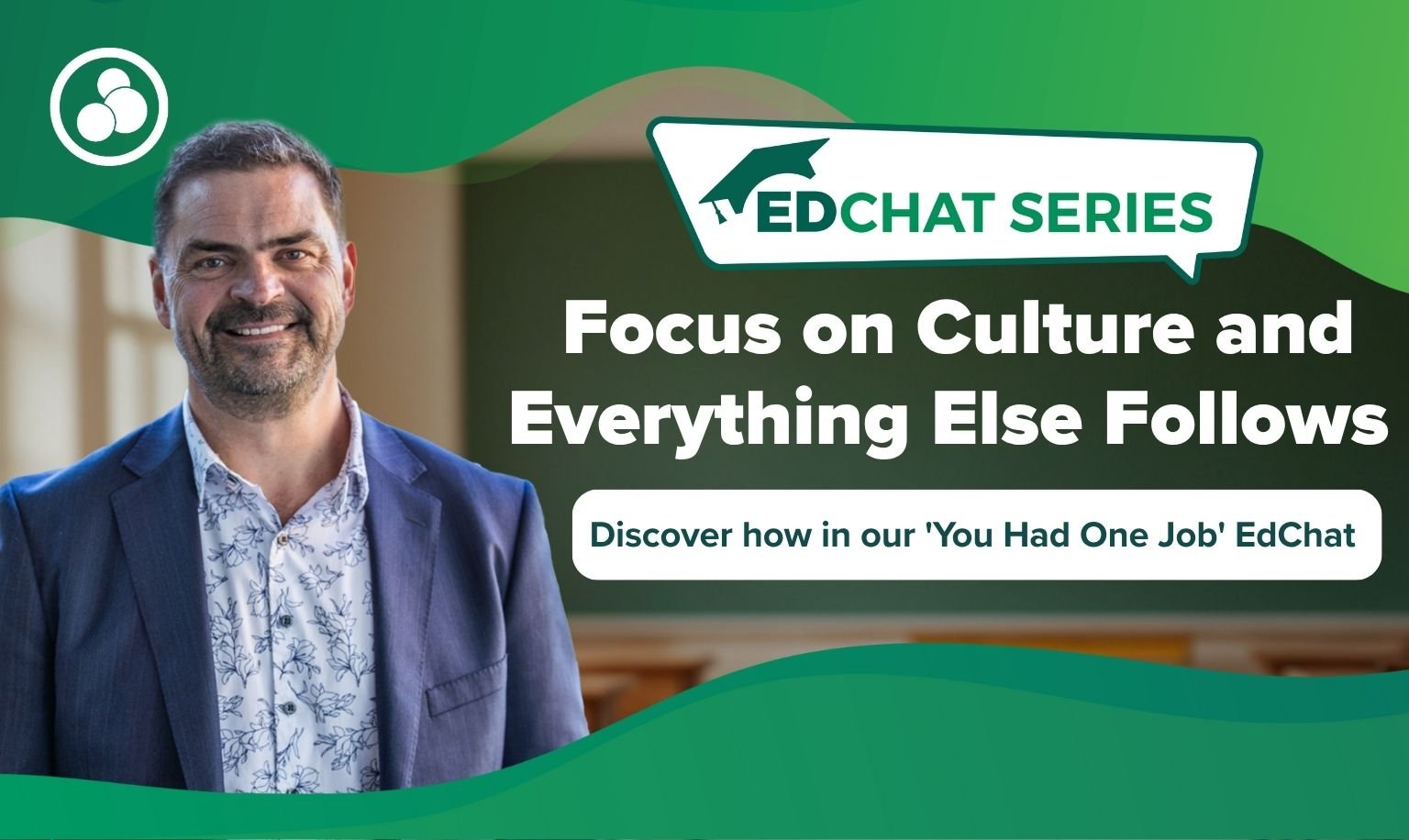
If you could choose one investment to shape a student’s future – academically, socially, emotionally – research suggests you would start with literacy. And you would start early.
The years between 5 and 8 offer a rare window of opportunity. During this time, the brain is primed to build the foundations of language, comprehension and executive function. These are the fundamental skills that underpin success across every subject.
Because of this potential, early literacy is not just about learning to read. It’s about helping children develop confidence, resilience and a lifelong connection to learning.
Growing evidence shows that strong early literacy skills support lifelong wellbeing – with nearly 9 out of 10 children who develop robust reading foundations demonstrating positive mental health outcomes.
Children with access to books and literacy-rich environments don’t just develop stronger cognitive skills and achieve higher academically – they tend to live longer, more fulfilling lives.
Literacy nurtures empathy, self-awareness, motivation and confidence – equipping children with the fundamental tools to thrive in an increasingly complex world.
Many US states now recognize this potential, requiring universal early literacy screening in K–2 to ensure all readers receive the targeted support they need to build strong foundations from the start.
As school leaders, you’re uniquely empowered to make decisions in these formative years that have a powerful and lasting impact.
With recent data highlighting the need for renewed focus on early reading instruction, there’s never been a more important time to harness what we know and create meaningful change.
This article explores what the evidence says about early literacy, why the timing couldn’t be better and how the right approaches can make joyful, successful literacy possible for every child.
The window of opportunity: Harnessing the brain’s prime learning years
What neuroscience reveals is extraordinary: there’s something uniquely powerful happening in children’s brains between ages 5 and 8 that creates an incredible opportunity for growth.
This window aligns perfectly with many states’ early reading benchmarks and third-grade retention policies, making it the ideal time to harness this natural readiness.
During these years, the neural architecture for executive function – the brain’s ‘air traffic control system’ that manages working memory, attention and cognitive flexibility – undergoes its most dramatic transformation, enabling children to focus, remember, control impulses and adapt to change.
These skills are absolutely essential for mastering reading and writing and, in turn, for thriving in the classroom.
Here’s what makes this timing so remarkable: by age 5, these skills are emerging and beautifully flexible, ready to be shaped and strengthened.
By age 7 or 8, key brain circuits begin to mirror adult patterns, which means this window of maximum brain plasticity offers educators their greatest opportunity to build lasting foundations.
The research doesn’t just suggest early intervention works – it reveals why the precious early education years (Kindergarten to 2nd Grade) offer educators such an impactful, perfectly-timed chance to build these foundational skills.

Equity begins early: Why starting points matter
As more states recognize students’ need to read proficiently by Grade 3, district leaders have an unprecedented opportunity to transform early reading outcomes in K–2.
This focus has grown as districts increasingly tie both superintendent success and funding to meaningful metrics like graduation rates, workforce readiness and equity outcomes.
Early intervention isn’t just good practice anymore – it’s now the pathway to sustainable excellence and equity.
The data tells an inspiring story about what’s possible.
Children who develop strong reading skills experience remarkable benefits: National Literacy Trust research shows that 39.4% of high-literacy children report strong mental health, demonstrating the profound connection between reading confidence and emotional wellbeing.
Good readers build resilience that serves them throughout adolescence and beyond. In other words, children who learn to read well become adults who are equipped to thrive.
The physical health benefits are equally remarkable. Adults with strong literacy skills are significantly more likely to engage in preventive care like vaccinations and screenings, leading to better lifelong health outcomes.
Perhaps most importantly, literacy development nurtures empathy and social understanding through engaging with stories and characters, strengthening children’s ability to build meaningful relationships and connect deeply with peers.
What effective early literacy looks like
We now understand that the long-standing debate of code-based phonics versus meaning-based reading was never the right question.
As Harvard expert on literacy pedagogy and senior lecturer Pamela Mason puts it:
The basic debate is, do we teach code or phonics, or do we teach meaning? And we have to teach it all.
This comprehensive understanding is now driving transformative policy changes, with state legislation increasingly embracing structured literacy models that empower schools to implement explicit, systematic phonics alongside rich comprehension strategies – reflecting Science of Reading research that confirms the power of teaching both code and meaning together.
Best practice means combining all the elements: systematic phonics creates the foundation while rich vocabulary builds understanding; executive function training strengthens learning capacity while authentic reading experiences foster joy; comprehension strategies develop through engaging content that captivates young minds.
Studies consistently show that these integrated approaches significantly outperform traditional either-or models, demonstrating that working memory, attention control and love of reading flourish together.
To unlock potential for every student, we should embrace comprehensive Tier 1 instruction that aligns with how children actually learn, creating the strong universal foundation that MTSS frameworks require.

The heart of success: Building literacy through joy
Amid all the data-driven discussion, it’s easy to overlook a fundamental element: sparking genuine joy in reading.
Without it, literacy remains a skill, sometimes a clinical one – not a source of joy, lifelong learning and growth.
Teaching reading takes more than just a great curriculum. It means creating that perfect mix where learning feels good, especially making it fun.
There’s powerful research around cyclical positive reinforcement: you do something, you get better at it, it feels good, so you do it more. Success and joy keep us all in the game, whether we’re children learning to decode or adults mastering new skills.
We must teach students not only to read, but to love to read.
Pamela Mason captures it perfectly: we must teach both the code and the meaning, but we also need to help students discover why that matters – how decoding the sound of B opens doors to battles, then mysteries and ultimately, entire fantasy worlds.
Students ‘need variety in their reading diet’ to maintain that joy, where reading isn’t always an arduous analysis but sometimes just pure fun.
Most importantly, creating enthusiastic readers requires a partnership that extends beyond the classroom. When families and educators work together to make reading enjoyable, children develop stronger literacy foundations and maintain their love of books long-term.
This collaboration creates what experts call a ‘literacy-rich environment’, where bedtime stories at home reinforce phonics lessons at school, where parents and teachers celebrate the same reading milestones and where children see the adults genuinely excited about books.
When everything works in favor of encouraging reading, the choice to read becomes entirely theirs – and with it comes improved attendance, stronger engagement and a classroom culture where learning thrives.
What school leaders can do to drive change
As leaders, you’re perfectly positioned to reshape early literacy outcomes through strategic, evidence-based action – and that’s a win for everyone involved.
With state-funded early literacy initiatives increasingly prioritizing structured literacy models, now is the time to seize the opportunity and adopt high-impact interventions that strengthen Tier 1 instruction and establish early reading success as the new norm.
Start by investing in high-quality instruction rooted in the Science of Reading. Ensure your teachers receive ongoing professional learning and coaching to deliver structured, explicit phonics instruction alongside rich comprehension experiences.
Use data early and often: implement regular assessments to identify struggling readers before gaps widen, then allocate resources where they’re needed most.
Equally important is building strong partnerships with families. Provide access to decodable readers and literacy resources that parents can use at home. When families and schools work together with a shared mission, children experience consistent literacy support across all environments.
The research is clear, the opportunity is unmissable and the time is now.
With public dashboards, state mandates and third-grade retention laws increasing pressure on early literacy performance, even the smallest steps you take in this short timeframe between ages 5 and 8 can lead to giant leaps in your students’ future.
Take the next step in your early literacy program
Download ‘A Reading Expert’s Case for Rethinking Fluency’ – a comprehensive resource featuring insights from Dr. Timothy Rasinski and designed for educators committed to getting reading instruction right from the start.





